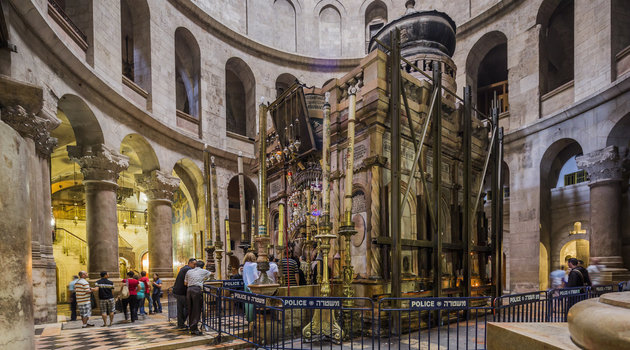JERUSALEM (TIP): A stone slab that many Christians believe once held the body of Jesus Christ after the crucifixion has been unveiled for the first time in centuries.
National Geographic, which was filming the restoration work at the Church of the Holy Sepulcher in Jerusalem, said the marble that encased the slab since at least 1555 was removed as part of the project.
“We were surprised by the amount of fill material beneath it,” Fredrik Hiebert, archaeologist-in-residence at the National Geographic Society, told the organization’s website. “It will be a long scientific analysis, but we will finally be able to see the original rock surface on which, according to tradition, the body of Christ was laid.”
The church is one of the most revered sites in Christianity, and includes the location traditionally believed to have been the scene of the crucifixion as well as the tomb. It’s also highly controversial, as the location was not identified until centuries after the events depicted in the New Testament.
Today, the operation and maintenance of the church is a tense, “status quo” arrangement between several Christian denominations, including the Greek Orthodox, Armenian Orthodox and Roman Catholic churches. At times, fights have broken out between these sects. Such disagreements have allowed parts of the facility to fall into disrepair, and last year the Israeli government temporarily shut down the church over fears of a possible collapse.
Earlier this year, the factions agreed to a nine-month renovation to fix the crumbling chapel that was built over the revered site, and to make other long-overdue repairs. Removing the marble that encased the slab was part of that process, and will be featured in a National Geographic Channel “Explorer” episode in November.
“We are at the critical moment for rehabilitating the Edicule” (which encloses the tomb), Antonia Moropoulou of the National Technical University of Athens told National Geographic. “The techniques we’re using to document this unique monument will enable the world to study our findings as if they themselves were in the tomb of Christ.”
